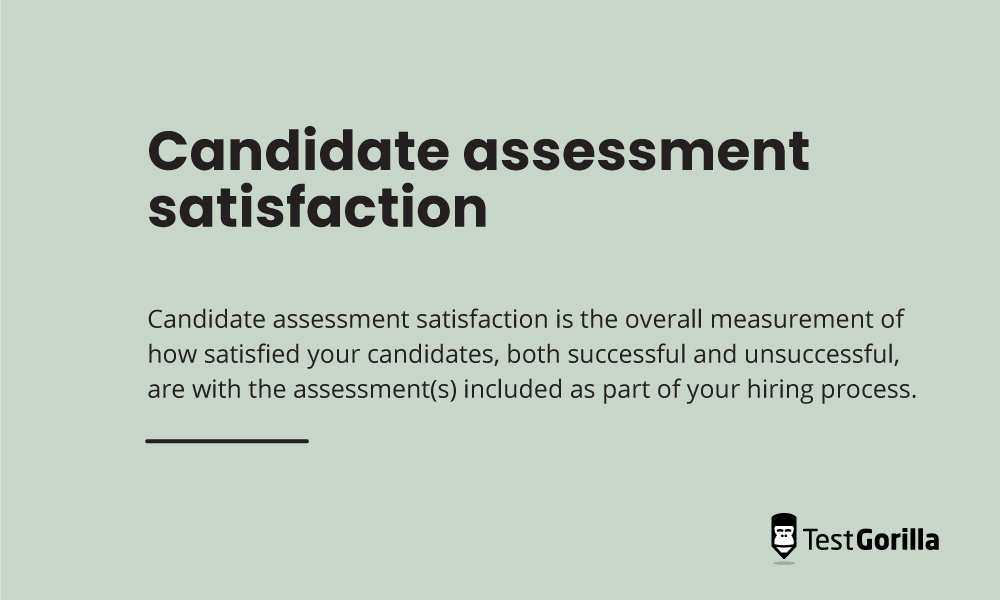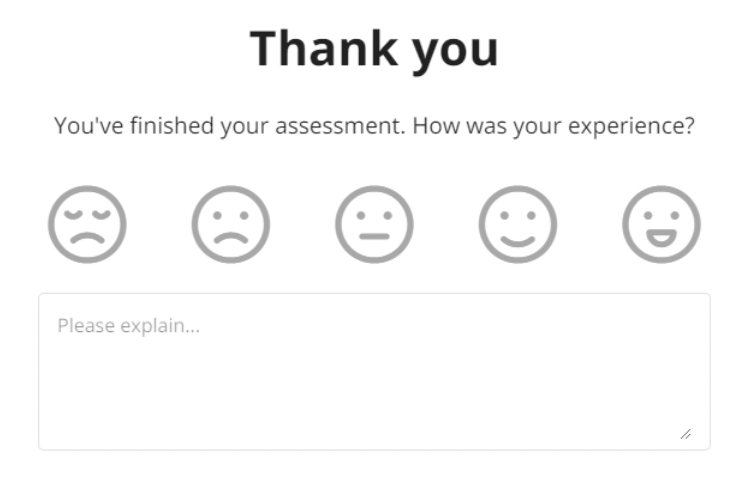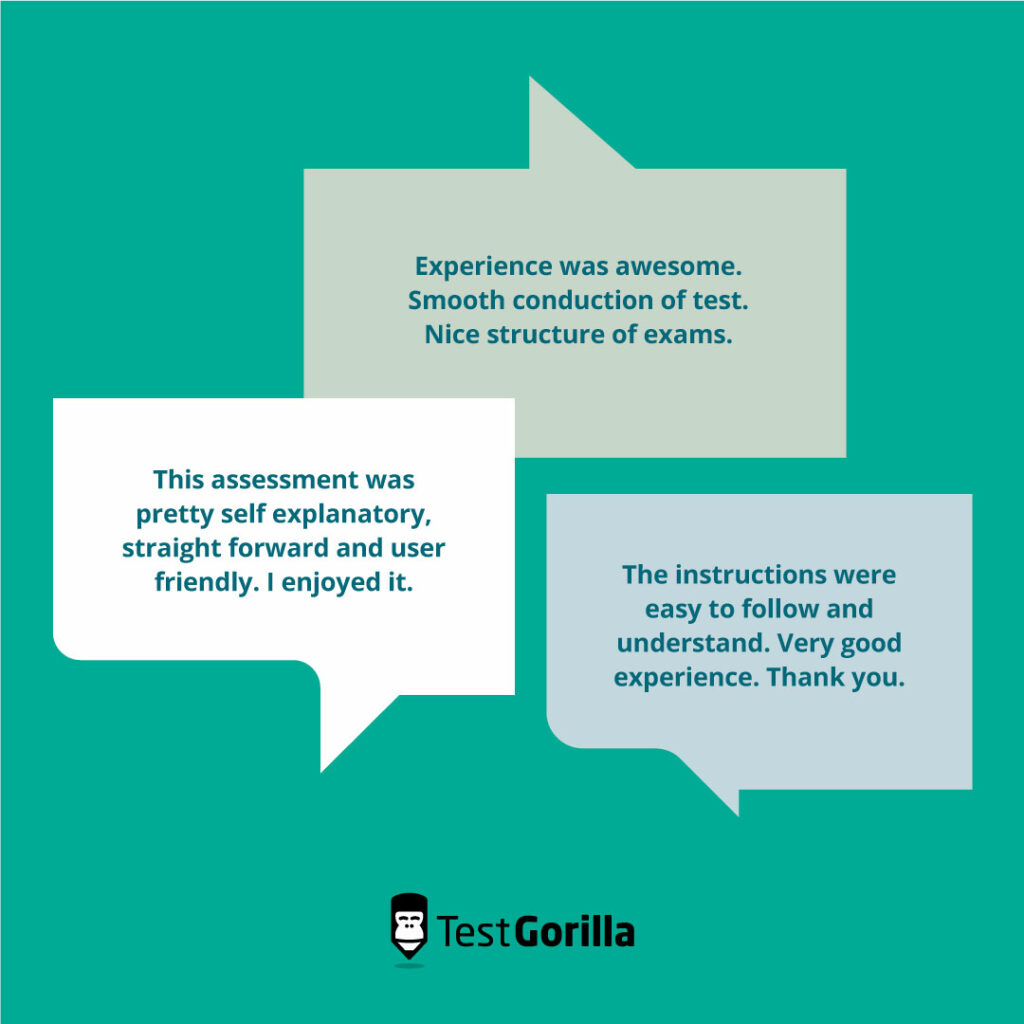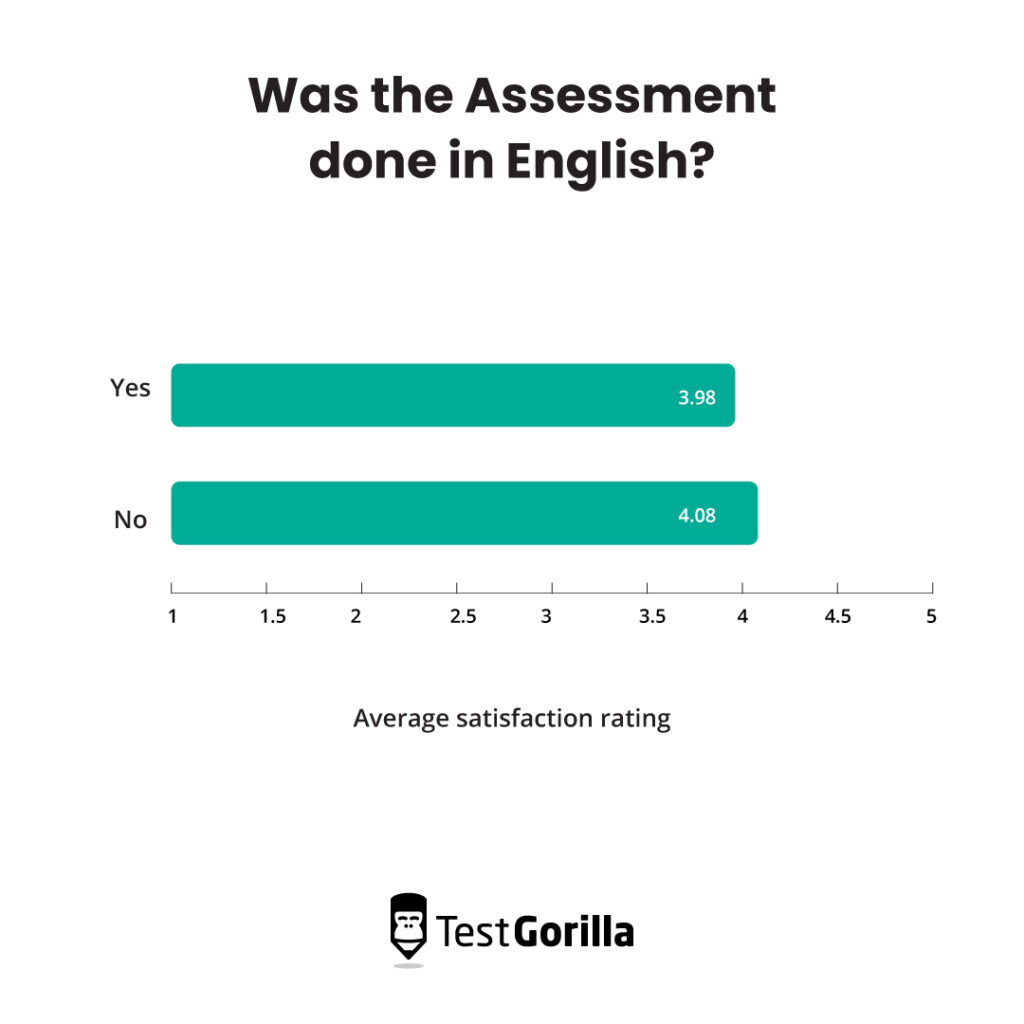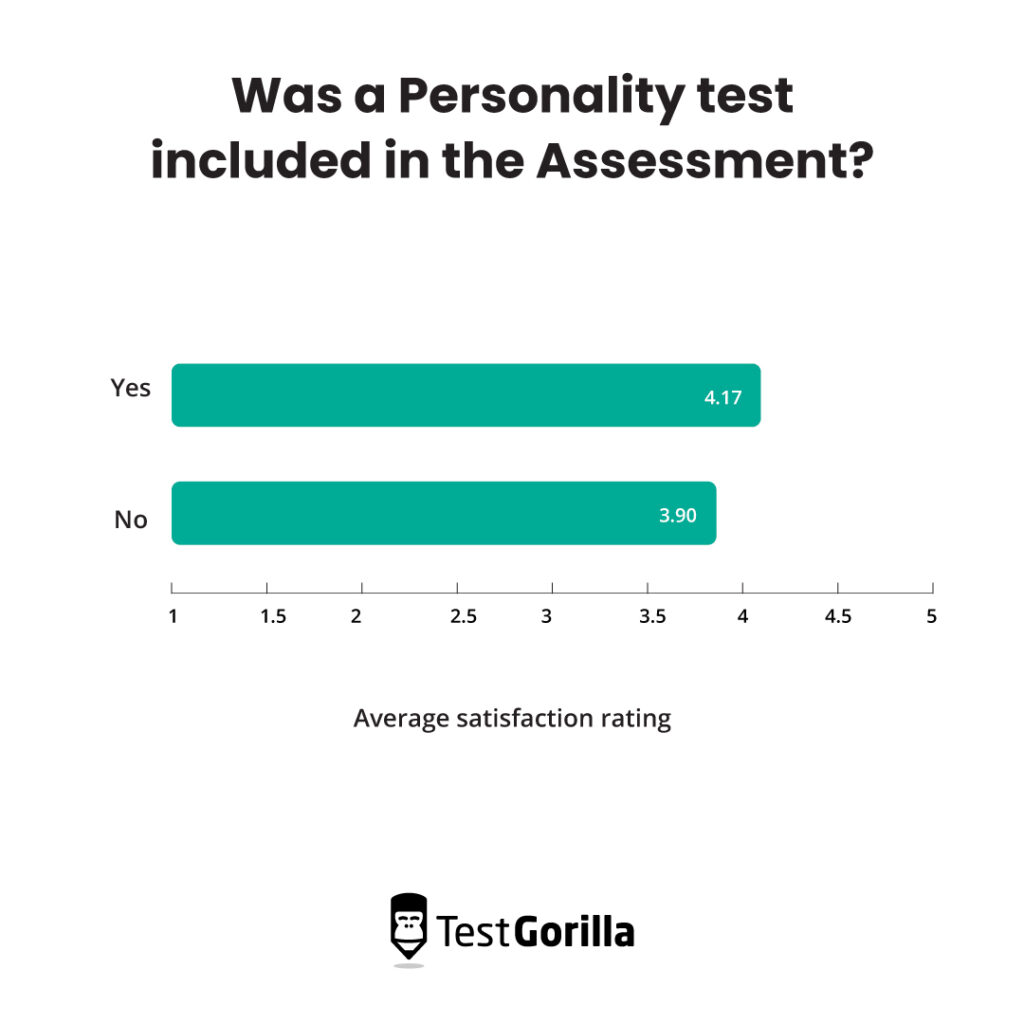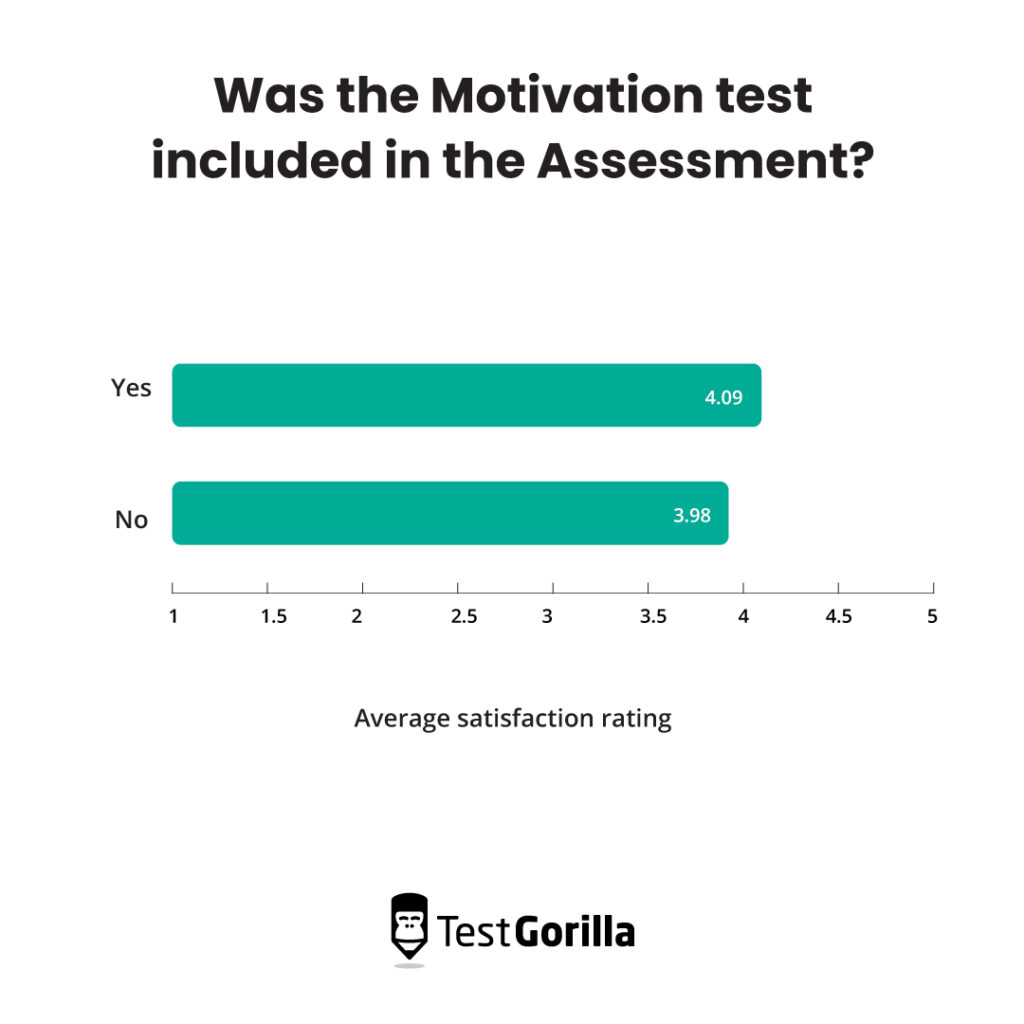A brief introduction to: Candidate satisfaction
Science series materials are brought to you by TestGorilla’s team of assessment experts: A group of IO psychology, data science, psychometricians, and IP development specialists with a deep understanding of the science behind skills-based hiring.
TestGorilla takes a deeply scientific and multi-layered approach to creating tests for skills-based hiring. This series of brief introductions aims to conjure transparency when it comes to how we build our tests and how we advise they are used.
In this post, we’ll introduce you to candidate satisfaction, explain why it’s important, and offer some steps employers can take to ensure their candidates have the best assessment experience with TestGorilla.
Table of contents
What is candidate assessment satisfaction?
Candidate satisfaction is the overall measurement of how satisfied your candidates, both successful and unsuccessful, are with the assessment(s) included as part of your hiring process.
How is it measured at TestGorilla?
The hiring process starts when a candidate reads a job description and applies for a job, and it ends whenever your contact with that candidate ends (this might be after an assessment, or after an assessment and an interview). If you extend an offer to a candidate, it can go all the way up to the point at which they become an employee.
At TestGorilla, we take ownership of candidate satisfaction as it pertains to the assessment stage of the hiring process. If you have bad job descriptions or interview etiquette, that’s on you – but we offer some guidance on these topics here and here.
We measure how satisfied candidates are with their assessment experience by asking each candidate, after they have taken their assessment, to rate their experience.
This rating, which consists of the 5 smiley faces you can see above, gives us a good quantitative understanding of how happy candidates are with their assessment experience.
From left to right: One, two, three, four, and five candidate satisfaction points are ascribed to each face. An average is calculated by adding all scores together and dividing it by the number of candidates.
The text box equips us with richer and more specific anecdotal feedback so that we can identify commonalities among different types of candidate experience and improve our product accordingly. Below are some examples of anecdotal feedback.
Why is candidate satisfaction important?
Research shows that high candidate satisfaction makes talent acquisition easier for companies.
According to a recent IBM report, applicants who have a positive applicant experience are 30% more likely to accept a job offer. Data also shows that 58% of candidates have declined a job offer because of a negative candidate experience.
With this in mind, it’s a priority for us to make sure that, if you’re using TestGorilla as part of your hiring process, your candidates are as satisfied with their assessment-taking experience as possible.
3 recommendations for improving candidate satisfaction if you’re using TestGorilla
Although we take ownership of how satisfied candidates are with their assessment experience – we are, after all, the ones who build the TestGorilla tests and user interface – there are a few things recruiters and hiring managers can do to improve candidate satisfaction.
We dug through our candidate satisfaction data, analyzing around 200,000 satisfaction ratings and around 55,000 candidate comments from a single quarter. Our analysis utilized details on assessment features (for example, was a personality test included?) to garner recommendations for improving candidate satisfaction.
Assess candidates in their own language
96.8% of TestGorilla assessments completed between October and December 2022 were taken in English. Assessments taken in other languages received an average candidate satisfaction rating of about 0.1 satisfaction points higher than those taken in English.
The takeaway here is that candidate satisfaction is higher when candidates are tested in their own language. Currently, TestGorilla’s test library is available in 8 languages: English, Spanish, Dutch, French, German, Italian, Japanese, and Portuguese (Brazilian).
Include a Personality test in your assessment
28.9% of assessments taken between October and December 2022 included a personality test. Our data shows a 0.27 candidate satisfaction point increase when an assessment includes a personality test.
In light of this, our advice to TestGorilla users would be to always include a personality test in your assessment, no matter the role you’re hiring for. Personality tests give candidates the opportunity to demonstrate their soft skills, and help employers to learn more about their candidates’ traits, behaviors, and worldviews. You can learn more about how to best use personality tests in our guide to personality tests.
Include a Motivation test in your assessment
2% of TestGorilla assessments completed between October and December 2022 included the Motivation test. There was a 0.1 candidate satisfaction point improvement when the Motivation test was included, indicating that this test improves the candidate experience.
The Motivation test is a valuable addition to any assessment for any role – it’s customized to your organization, based on a survey you fill out, and we developed it especially to help employers identify motivated talent.
Our Motivation test is designed to identify alignment between what a candidate is motivated to do and what the design of the job they’re applying for looks like. As such, we recommend including a Motivation test in your talent assessment in order to boost candidate satisfaction.
Want to learn more about the science behind skills-based hiring?
Check out additional brief introductions from our science series to learn more about the science behind TestGorilla:
Related posts
Hire the best candidates with TestGorilla
Create pre-employment assessments in minutes to screen candidates, save time, and hire the best talent.
Latest posts
The best advice in pre-employment testing, in your inbox.
No spam. Unsubscribe at any time.

Hire the best. No bias. No stress.
Our screening tests identify the best candidates and make your hiring decisions faster, easier, and bias-free.
Free resources
This checklist covers key features you should look for when choosing a skills testing platform
This resource will help you develop an onboarding checklist for new hires.
How to assess your candidates' attention to detail.
Learn how to get human resources certified through HRCI or SHRM.
Learn how you can improve the level of talent at your company.
Learn how CapitalT reduced hiring bias with online skills assessments.
Learn how to make the resume process more efficient and more effective.
Improve your hiring strategy with these 7 critical recruitment metrics.
Learn how Sukhi decreased time spent reviewing resumes by 83%!
Hire more efficiently with these hacks that 99% of recruiters aren't using.
Make a business case for diversity and inclusion initiatives with this data.

